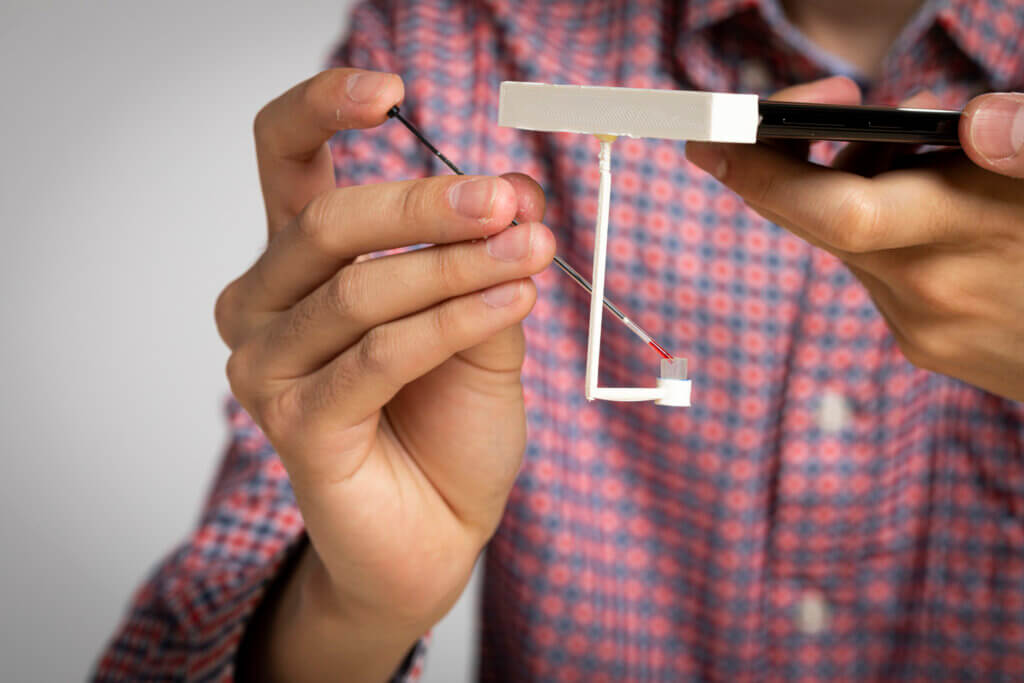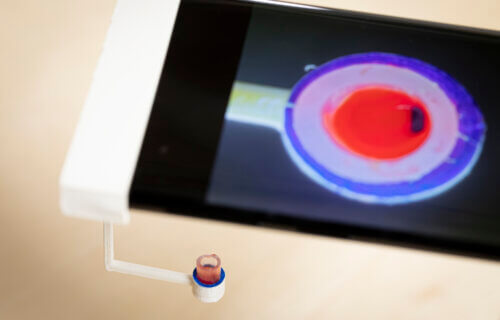SEATTLE — An app which uses mobile phone vibrations to measure blood clotting could prevent millions of potentially fatal heart attacks. The technology offers people taking heart medication a much cheaper way of monitoring their blood’s thickness, say scientists.
While blood clots form naturally to prevent bleeding when someone is injured, they can also prove fatal for patients with heart conditions. Those fitted with a mechanical heart valve could especially be at risk of suffering from a stroke or heart attack if their blood thickens. This is why millions of people living with heart problems around the world rely on blood thinning tablets like warfarin to prevent it from clotting.
Maintaining the right thickness level is tricky, however, and requires patients to get tested on a regular basis. Typically that’s done either at a medical clinic or by using an expensive home testing kit. Now researchers at the University of Washington have come with a much “smarter” solution using a mobile phone.
“Back in the day, doctors used to manually rock tubes of blood back and forth to monitor how long it took a clot to form,” says senior author Shyam Gollakota, a professor in the Paul G. Allen School of Computer Science & Engineering at the university, in a statement. “This, however, requires a lot of blood, making it unfeasible to use in home settings.”

Their new system holds a tiny cup beneath the phone’s camera which contains a small copper particle and chemical to start the blood-clotting process. Once a drop of blood has been added, the phone’s motor vibrates, shaking the cup while the camera tracks the particle’s movements. As the blood becomes increasingly thick, the particle slows down and eventually stops once a clot has formed.
The phone then records two timestamps, one when the drop of blood is added and the second when the particle stops moving. This way it can measure the time it takes for blood to clot, which is either measured by what’s known as prothrombin time (PT) or an international normalised ratio (INR).
“The creative leap we make here is that we’re showing that by using the vibration motor on a smartphone, our algorithms can do the same thing, except with a single drop of blood,” says Gollakota. “And we get accuracy similar to the best commercially available techniques.”
Their new technology could help millions of people who rely on blood thinning meds like warfarin keep an eye on their clotting abilities.
“Most people taking this medication are taking it for life,” notes co-author Dr. Kelly Michaelsen, an assistant professor of anesthesiology and pain medicine in the UW School of Medicine. “But this is not a set-and-forget type of thing – in the US, most people are only in what we call the ‘desirable range’ of PT/INR levels about 64 percent of the time. This number is even lower – only about 40 per cent of the time – in countries such as India or Uganda where there is less frequent testing.
“How can we make this better? We need to make it easier for people to test more frequently and take ownership of their health care.”
By using their technology, patients would only need to visit a clinic if their results were outside the desirable range. Their device was tested on three different types of blood sample from 140 anonymized patients at the university’s medical center. They also examined 79 from patients with known blood clotting issues and found the results were equivalent to other commercially available tests.
While the device is still in a proof-of-concept stage, the researchers have made the app’s code and are exploring next steps. They would like to further test the system in peoples homes and in countries with fewer resources.
“Almost every smartphone from the past decade has a vibration motor and a camera,” says Gollakota. “This means that almost everyone who has a phone can use this. All you need is a simple plastic attachment, no additional electronics of any kind. This is the best of all worlds – it’s basically the holy grail of PT/INR testing.”
The findings are published in the journal Nature Communications.
South West News Service writer Tom Campbell contributed to this report.

I would love to test this out. I’ve tested every week for years. The cost of supplies for my meter have been my problem. Going to a clinic is impossible every week